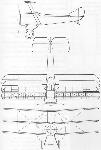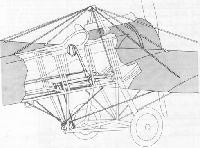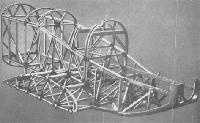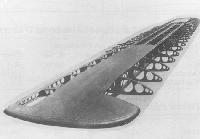Книги
Putnam
R.Kosin
The German Fighter since 1915
40
R.Kosin - The German Fighter since 1915 /Putnam/
Junkers single-seater, fuselage framework made of open dural profile strip, before attachment of corrugated sheet metal skin.
Second to last Roland fighter was the experimental Type D.XVI. (160 h.p. eleven-cylinder Siemens-Halske Sh III engine.)
A Siemens-Halske Sh III engine distinguished the second of the two D XVI fighter prototypes.
A Siemens-Halske Sh III engine distinguished the second of the two D XVI fighter prototypes.








































